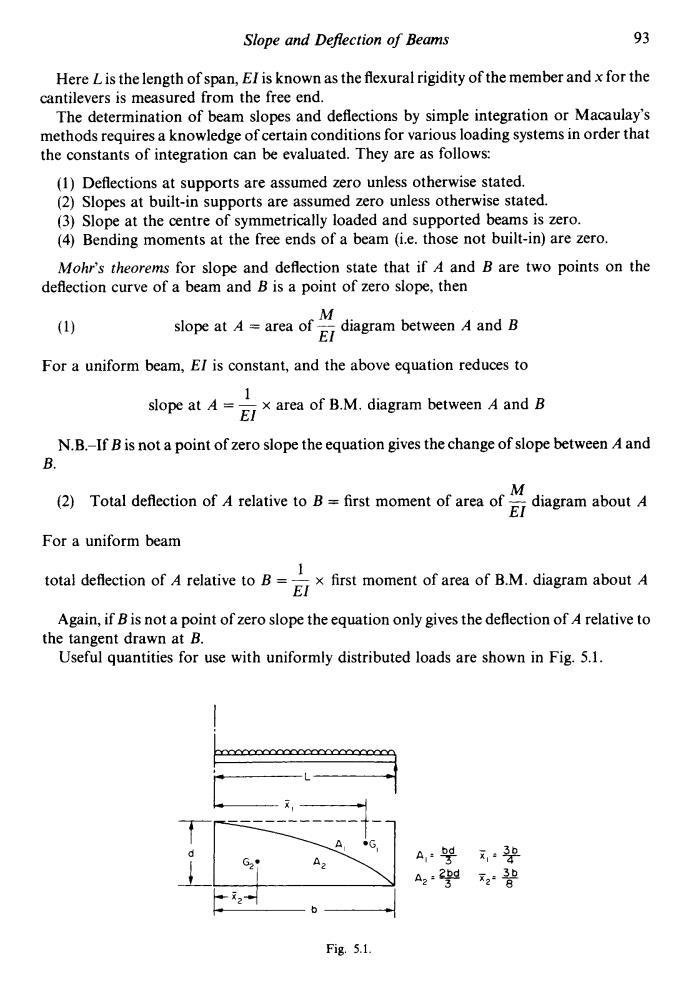正在加载图片...

Slope and Defection of Beams 93 Here L is the length of span,EI is known as the flexural rigidity of the member and x for the cantilevers is measured from the free end. The determination of beam slopes and deflections by simple integration or Macaulay's methods requires a knowledge of certain conditions for various loading systems in order that the constants of integration can be evaluated.They are as follows: (1)Deflections at supports are assumed zero unless otherwise stated. (2)Slopes at built-in supports are assumed zero unless otherwise stated. (3)Slope at the centre of symmetrically loaded and supported beams is zero. (4)Bending moments at the free ends of a beam (i.e.those not built-in)are zero. Mohr's theorems for slope and deflection state that if A and B are two points on the deflection curve of a beam and B is a point of zero slope,then (1) slopetarc ofgrm betweend For a uniform beam,EI is constant,and the above equation reduces to 1 slope at AEarea of B.M.diagram between A and B N.B.-If B is not a point of zero slope the equation gives the change of slope between A and B M (2)Total deflection of A relative to B first moment of area of El diagram about A For a uniform beam total deflection of A relative to B= x first moment of area of B.M.diagram about A EI Again,if B is not a point of zero slope the equation only gives the deflection of A relative to the tangent drawn at B. Useful quantities for use with uniformly distributed loads are shown in Fig.5.1. anaaanaaaaanaaoananaaaoad A,9 元·碧 42 g碧 2 Fig.5.1.Slope and Depection of Beams 93 Here Lis the length of span, El is known as the flexural rigidity of the member and x for the cantilevers is measured from the free end. The determination of beam slopes and deflections by simple integration or Macaulay's methods requires a knowledge of certain conditions for various loading systems in order that the constants of integration can be evaluated. They are as follows: (1) Deflections at supports are assumed zero unless otherwise stated. (2) Slopes at built-in supports are assumed zero unless otherwise stated. (3) Slope at the centre of symmetrically loaded and supported beams is zero. (4) Bending moments at the free ends of a beam (i.e. those not built-in) are zero. Mohr's theorems for slope and deflection state that if A and B are two points on the deflection curve of a beam and B is a point of zero slope, then M. El slope at A = area of - diagram between A and B (1) For a uniform beam, El is constant, and the above equation reduces to 1 El slope at A = - x area of B.M. diagram between A and B N.B.-If B is not a point of zero slope the equation gives the change of slope between A and B. M. El (2) Total deflection of A relative to B = first moment of area of - diagram about A For a uniform beam total deflection of A relative to B = - x first moment of area of B.M. diagram about A Again, if B is not a point of zero slope the equation only gives the deflection of A relative to Useful quantities for use with uniformly distributed loads are shown in Fig. 5.1. 1 EI the tangent drawn at B. I I Fig. 5.1